size? Fashion Photography Award at Graduate Fashion Week


We’re pleased to announce we’ll be partnering up with Graduate Fashion Week for the first time in 2018, sponsoring a new award: The size? Fashion Photography Award.
The size? Fashion Photography Award builds on this ethos, with a commitment to sourcing the most creative photography talent and to make sure it is showcased alongside industry professionals on our multiple channels. We understand the effectiveness of photographic creativity within each of our campaigns, and the award will reach out to those individuals who are able to display their flair and vision within the industry.
The finalists selected by size? will be invited to the Graduate Fashion Week Gala Awards Show, where the winner will be announced receiving a prize of £750, with an additional £250 going to the winning university.
Ahead of judging on Sunday 3rd June, we’ve got a preview of shortlisted finalists from Universities across the UK, with each photographer taking their own individual viewpoint on fashion photography. Take a look at their portfolios below and stay tuned to our social channels throughout next week for live coverage of the event.
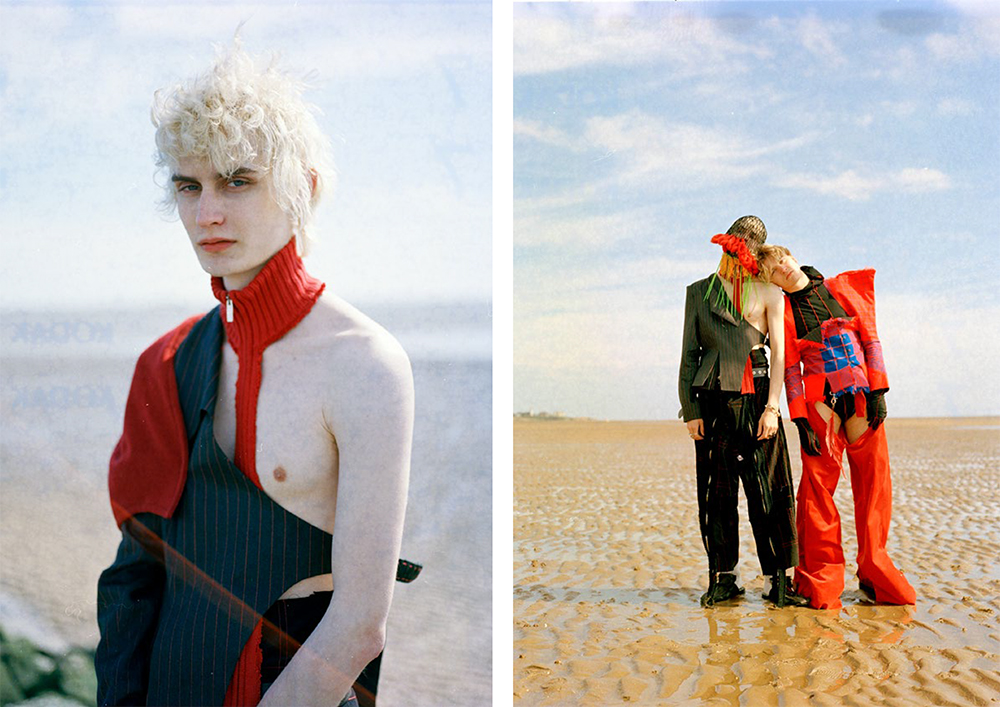
Heather Glazzard – University of Salford
My photography is a personal exploration of sexuality, vulnerability and femininity. Shooting exclusively on film, I aim for my imagery to be as egoless as possible, focusing on light and how it can change an individual’s face and body. I take intimate portraits of the wide spectrum of gender and sexuality that makes up the queer community of creatives, writers and artists alongside activists and campaigners that I belong to. Creating trust through a two-way relationship,my interactions with models are a form of collaboration, while they’re also a way to understand my own sexuality, photographing people in whom I can see aspects of myself or who I aspire to be. I explore diversity by celebrating people as unique individuals. Showing girls’ bodies in their authentic appearance, as seen through a female eye without retouching, is very important to me – celebrating the feminine as something that is non-gendered while showing that sexuality is merely a social construct and a vulnerable thing that can change at any moment. Depicting people who are open, sensitive and have a pureness about themselves, my approach helps them be more open about their sexuality and the body they were born into.
Ultimately, my photography is about creating and embracing a space of wholesomeness outside of preconceived stereotypes and judgments.

Callum McIntyre – Manchester Metropolitan University
“The concept behind this entire shoot took inspiration from the Seven Deadly Sins – growing up as a small boy in Ireland attending Catholic School, and having being taught the terrifying consequences of the Seven Sins really scared me as a kid. Whenever I think about the sins now, after having grown up, I’ve realised they are in fact just human emotions, that everyone feels, and that everyone is silently dealing with. I wanted to flip the sins on their head, and come at them in positive light invoking feelings of hope, life, love, and light within them instead of dread that I felt as a child. Using my style of portraiture photography on 120mm film I shot seven editorials where each sin was stripped back in a minimal but human way. For example, lust took the presence of an extremely positive way of looking at yourself. To lust after the best version of yourself, to lust after how you look in an age where social media can so detrimental to a young person’s view of themselves. To lust after everything – and to not be ashamed of that. In a few of the shots you will see a hand in the background peeling away paper – this represented peeling away layers of self-hatred. For each shoot, this element of self-acceptance and light followed through, you just have to look for the light in all of the images. I didn’t want the shoots to be stereotypical in their sense – perhaps you will look at the images and not know what exactly the sin is, but it will become clear as you read the captions, and that was the whole point. As a whole, the shoots represented what young people are currently battling with, and as the times change, and we enter the unknown, it’s best to carry the light with you always.”
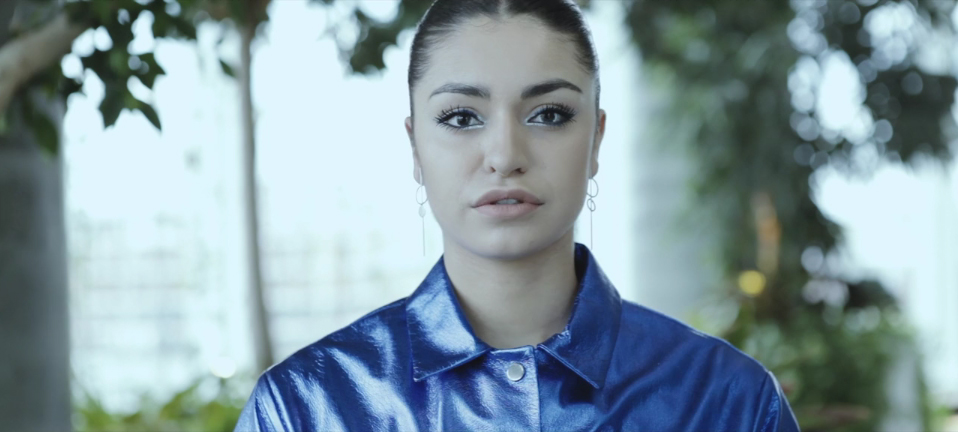

Veronica Mihhailova – UCA Rochester
This short film plays with the idea of what could happen if we continue living ‘for an online success’. This film is a wake up call for those who spend hours trying to figure out the ‘right mask’ to wear today. In Instagram we sell ourselves using headings such as ‘Model’, ‘Vegan’, or ‘fitness lover’ and we suppose that the better the heading, the higher the cost so the buyer will approach us. Social media has also influenced our life priorities and the escort industry that is getting more and more popular each day. You see this Louis Vuitton bag on one cool IG page, then on another, and the next day you are a product yourself.

Tia Wynter – Solent University
“It is evident that diversity remains an issue within the fashion and beauty industry. Although we have made some progression in recent years, we are still moving at a slow pace and for years, women of colour have had difficulties securing an equal position to their counterparts. From a young age, we as women take pride in looking and feeling our best as we often idolise the public figures and trends showed by the media, subconsciously conforming to society’s definition of beauty. Due to underrepresentation, women of colour are left with a sense of inadequacy and self-doubt which is often driven by the need for our natural state to be
accepted.
In today’s mainstream media, there is not much content that teaches us to embrace our natural selves as women of colour; in a world that at times can be hard to be both a woman and of colour. It is important for women of colour to know that they are beautiful, smart and most of all resilient. It is vital to know one’s self and accept our flaws and short comings. Although the journey of self-love and resilience may not be easy, it is important that we remain ourselves despite the odds against us. With this in mind, I have created a series of photos that highlight and celebrate the beauty of women of colour. With an overall theme of self-love and appreciation, I have aimed to capture a range of beautiful imagery that displays the contrast in women of colour from our hair to our hues whilst challenging our most fundamental assumptions of what it means to be
‘beautiful’.”
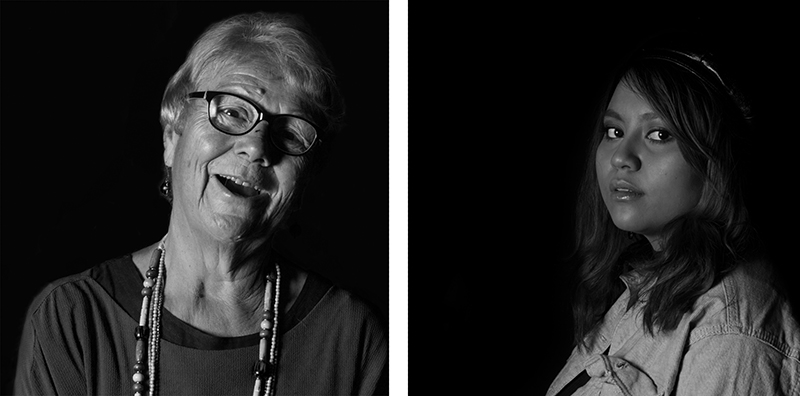
Lya Edmunds – University of South Wales
The main focus within my Final Major Project was to challenge the notions of the ‘ideal’ through an exploration into the ramifications of societies expectations of women; documenting the shift towards selfempowerment
and the way these women attempt to overcome the ideal.
Taken from the perspective of an inclusive cohort of women within South Wales, I celebrated and exposed the real woman, through a form of visual anthology. Through in-depth interviews, tailor made specifically for each sitter I analysed their personal experience and truth surrounding femininity.
Workshops explored how the sitters contribute to their identity through style, their relationship with garments and how they self-categorise. I created a safe space where each sitter could express themselves, discuss life experiences and sentimentality through style, exploring the relationship between sitter and photographer. Through co creation each sitter created a character for themselves that represented their identity
that intern was emulated within the shot.
The portraits I captured are a true depiction of the authentic woman, unedited and natural, only enhanced with shade and light to capture outer beauty and represent inner beauty. These women are not defined by age, gender nor race, they are celebrated due to their inner strength, individuality and empowerment. There is beauty and strength within diverse women, they are individual and unique. Women have the right to represent themselves no matter societies ideals or expectations.
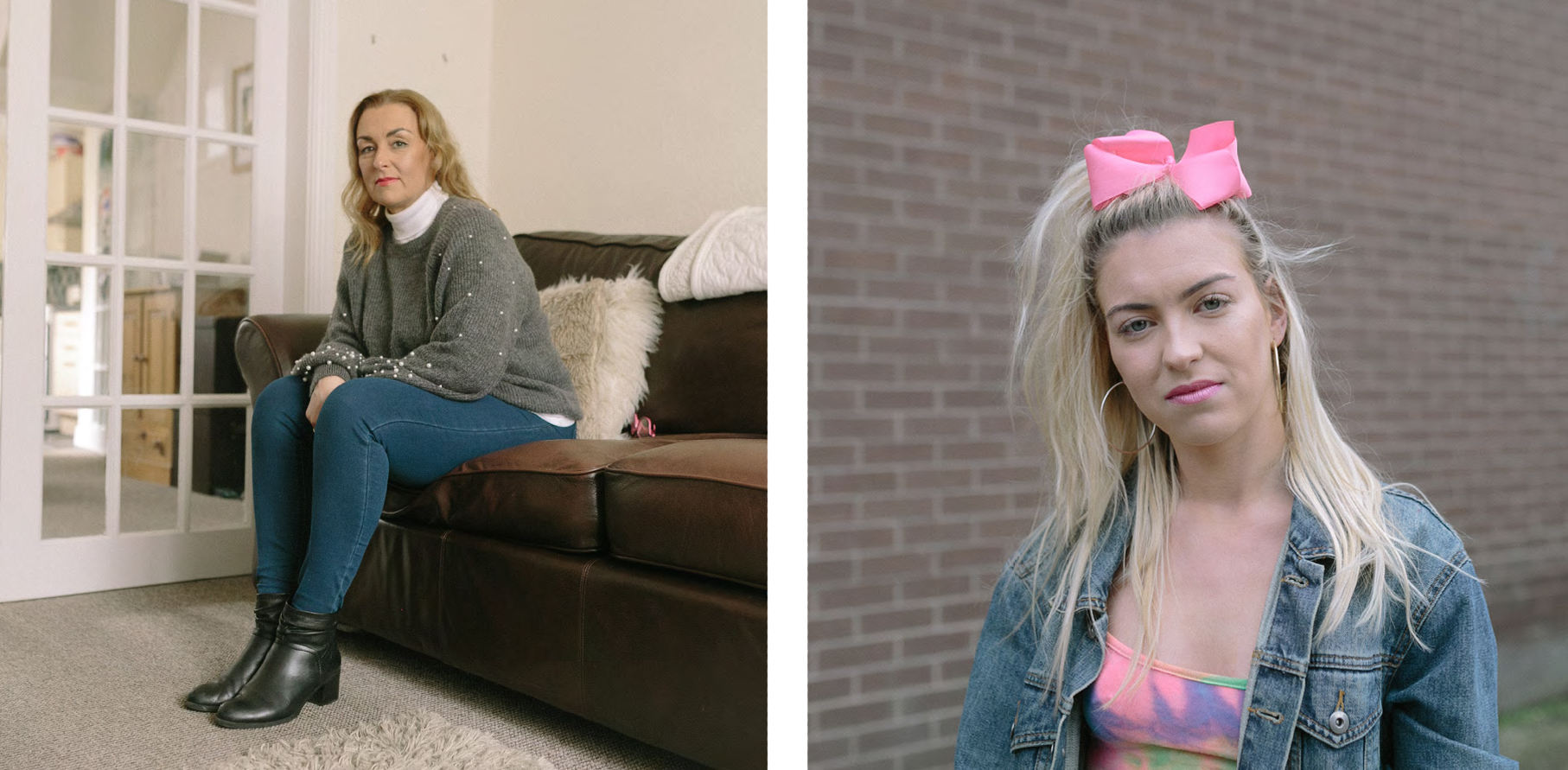
Megan Jepson – Northumbria University
Scarborough Girls is an intimate look at the community, contradictions and complexity of the small town of Scarborough. It brings together the distinctive women who make up a unique portrait and an honest representation of modern seaside Britain in a time of huge social change for not only our seaside towns but communities around the country.
Scarborough Girls is communicated through 2 mediums, a short promotional film depicting the women and their surroundings and also a hardback photographic book, the film and book are tied together through raw, honest and personal insights. The project has a genuine and truthful narrative running throughout to promote storytelling with a slight narrative.
I wanted to create a body of work featuring selected portraits which showcased the many strong and inspiring women whom inhabit the seaside town of Scarborough. Growing up in Scarborough as a young woman in an isolated seaside town, I found it extremely difficult to express myself and often felt restrained by my environment. Surrounded by lots of women in my family I saw that they had incredible powers of
resilience and influence.I came into contact with cultures and communities whom work together to provide better futures and prospects for both their older and younger generations. Their stories were presented to me in numerous different ways and I spent several months listening and discovering what they do for the community. The ultimate aim was to portray these women in an honest way through creative mediums.
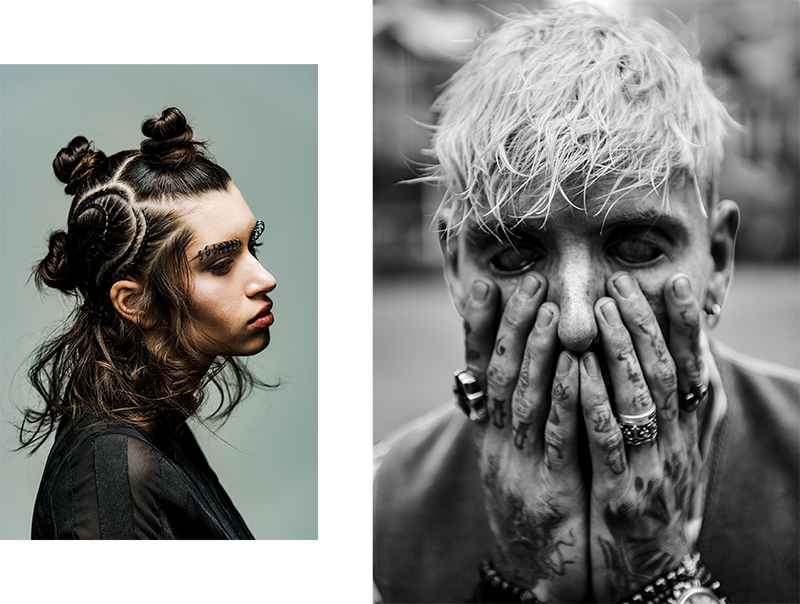
Kane Layland – Norwich University
My images present a contemporary, personal interpretation of culture. I am interested in people with their own take on fashion, who aren’t solely driven by the latest trends but rather clothing that defines who they are as individuals. Whilst I take influence from current and upcoming trends, the images I produce are not reliant on them. I always aim to communicate something of the characters from a unique perspective; the people I photograph stand out because they personify an idealisedversion of myself.
Informed by alternative rock music of the 80’s, 90’s and 2000’s that my dad listened to; bands from these era’s such Audioslave, Guns n Roses and Creed, has led to a raw, gritty and confrontational look within my photography. Taking this influence, I look to explore a variety of outcomes in my works varying subject matter, through different interpretations and renditions. For me fashion is more about standing out from the crowd, being comfortable to express yourself rather than fitting in.
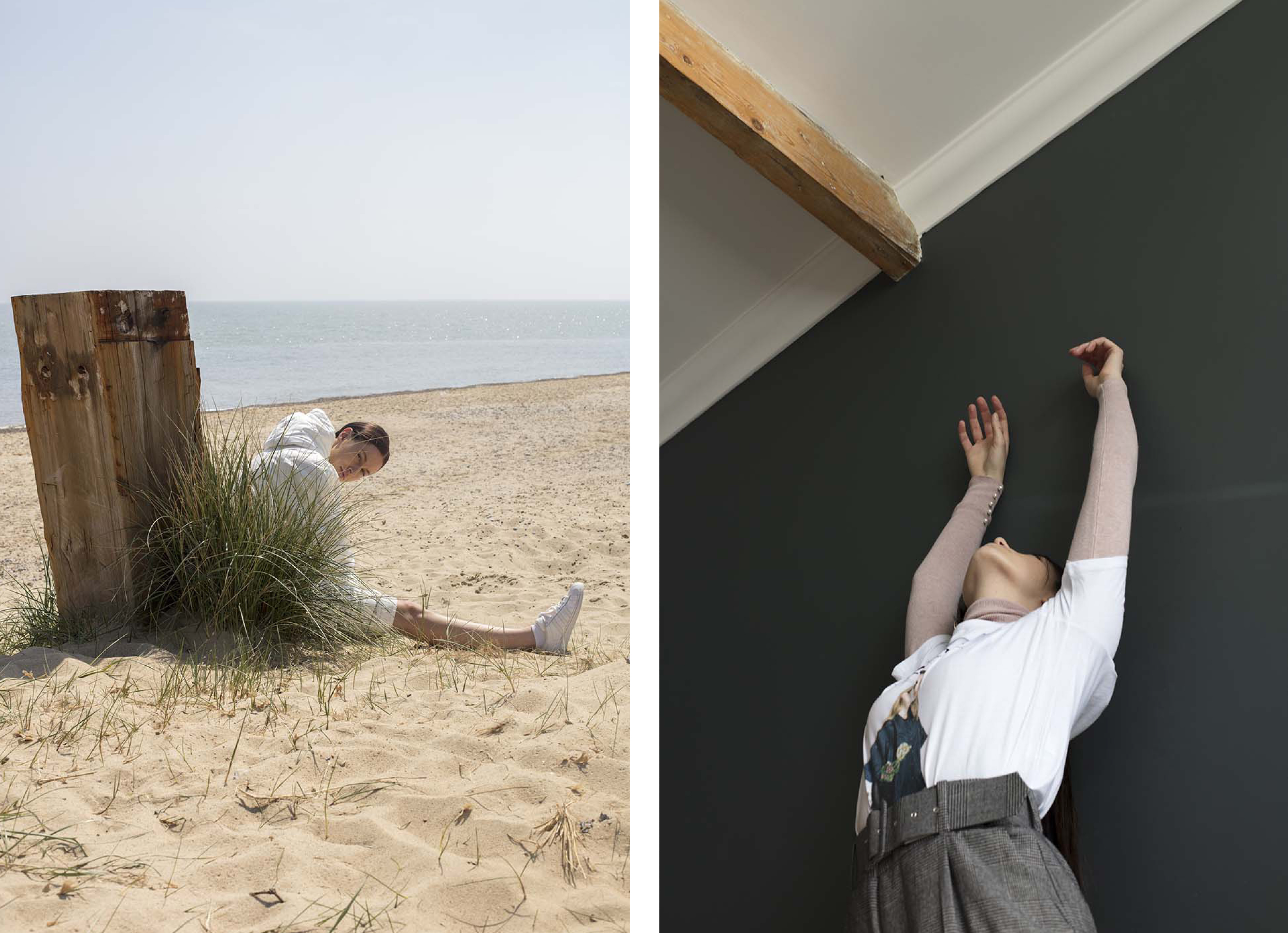
Rebecca Dennis – Norwich University
My recent work has been influenced by growing up in the early 2000’s and the bold, block colours and iconic logos of the ‘classic’ Adidas and Reebok clothing that my mother used to dress my sister and I in as well as herself.
The starting point for this body of work was contemporary sports clothing. These were matched with graphic elements and architecture around sporting venues and the urban environment to explore the wider impact on youth culture. I shoot in places I feel familiar and which make me feel at home. The work is unashamedly not high fashion.
I want the looks and style that I show within my images to feel attainable. The images are about the people and cultures that I know and that I am surrounded by. The works sets out to avoid any sense of a dull and grey downbeat Britain and the images include elements of colour and brightness whilst still being unapologetically British.
At a time when obesity and health are being raised as political agendas, I aim to make the importance of sports and the link to health lifestyles aspirational through my images.

Olivia Hughes – University of Central Lancashire
As a creative, I feel like I have good visual eye for placements and composition, so when I am coming up with new concepts for my shoots, it has always felt natural to me to photograph my own work. The emotion and feeling I am trying to portray is always much stronger when I am shooting myself as it makes it easier to translate my ideas into a vision. From a young age when I could first get my hands on a camera I used to take pictures of anything and everything, from a crack in the pavement that created a nice texture to capturing the people who were around me. Back then there were disposable cameras, which I still use today and for my work I’ve experimented with DSLRs, iphones and polaroids.

Natalie Campbell – Heriot Watt University
I have drawn inspiration for my photography from Old Master portraiture paintings and artists of the Surrealist Movement together with post-production processes utilised before the advent of The Digital Age. This exploration has challenged my original understanding of retouching and has been a liberating experience. It has defined my personal style.
Society has sustained a resistant attitude towards accepting manipulated fashion imagery as open fiction. This example of conforming to the conventional school of thought proves vital for those who wish to attain acceptance. As an avid practitioner in the post-production of fashion photography, I have often felt conflicted by the opposing and critical opinions of others.
However, there is something very liberating and playful about a medium that embraces distortion and change. The capability of producing and enhancing content that was once only imaginable in one’s head and transcending that into physical subject matter is something that truly excites me.
Inspiration for the narratives behind my photographic concepts examine repetitive habits that occur within the body. It was through the process of my own experiences with Compulsive Skin Picking that I was able to refine my overarching theme of the retouched fashion image for my photography. Repetitive body behaviours can be executed in a variety of ways, which I was keen to explore hence it became my central theme.
The complex actions that are initiated from body focused repetitive behaviours can be expressed in a manner of contrasting ways and are often rituals found behind closed doors. Each editorial plays out one of these roles and highlights the effects it can have on a person’s well-being and day-to-day life. Commonly associated with negativity and behaviours that affect us for the worst, the word ‘habit’ has been stigmatised by society. I wish to challenge the current perception and celebrate bodily habits in a stylised and sensual manner. Bespoke garments have been created throughout to enhance the individual aspects that convey sensations of motion and touch, allowing each story to be performed in the context of a fashion editorial.
My photography has formatted the evolution and perceptions that many hold over rendered imagery and highlights the urgency for a less literal approach when confronted with such images. In defiance of the relentless controversy of the fashion image and its consideration of art form or not, both entities have been undoubtedly linked with one another. Nonetheless it has to be questioned whether there is a bias towards some form of artistic expression over others.
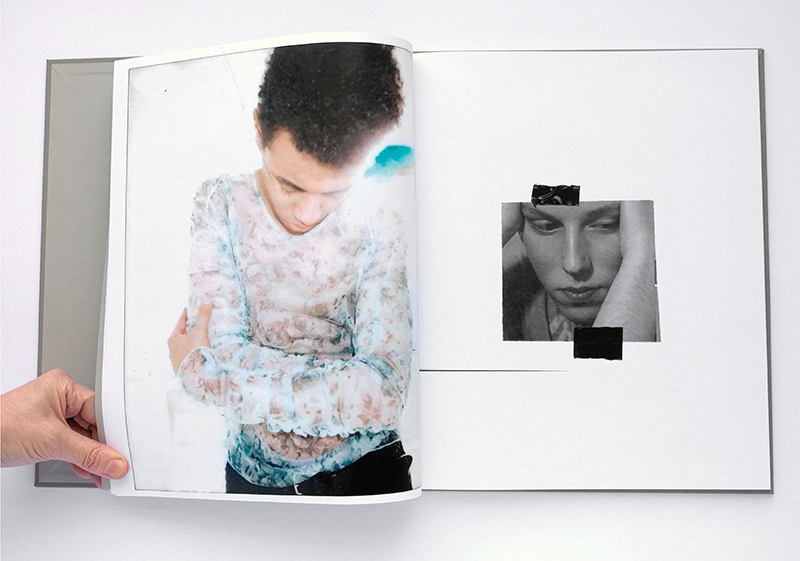
Sarah Harvie – Heriot Watt University
The concept behind my work reflects the changing definition of masculinity and my photography addresses issues of gender, sexuality and conformity.
The focus is on the narrative of young men and how they understand and represent masculinity in contemporary society. It investigates what has been traditionally recognized as ‘masculine’ behaviour and how this concept is changing. My work reflects how young men are pushing the boundaries away from the constraints and traditional notions of masculinity that their fathers and grandfathers were raised with.
I wanted to capture something very personal and to this end I began by talking to male friends between the ages of 18 and 23 about how they felt the concept and expectations of masculinity were moving away from previous generations. These conversations very quickly turned to the topic of emotional behavior and how this was shifting from a traditional, ‘stiff upper lip’ expectation to the acceptance of of a more emotionally
vulnerable man.
The guys said that they felt that the most prevalent expected behavioral trait was not to cry. Indeed, to ignore the presence of emotion altogether. However nearly everyone I spoke to agreed that this is no longer practical or desirable saying that they consider that they are the first generation of men to look at emotional vulnerability
as positive and natural behavior not to feel constrained by societal expectations.
It is this idea of young men being true to themselves and unfettered by stereotypes and traditions, that I wanted to reflect through my photographic work around the concept of ‘new masculinity’.
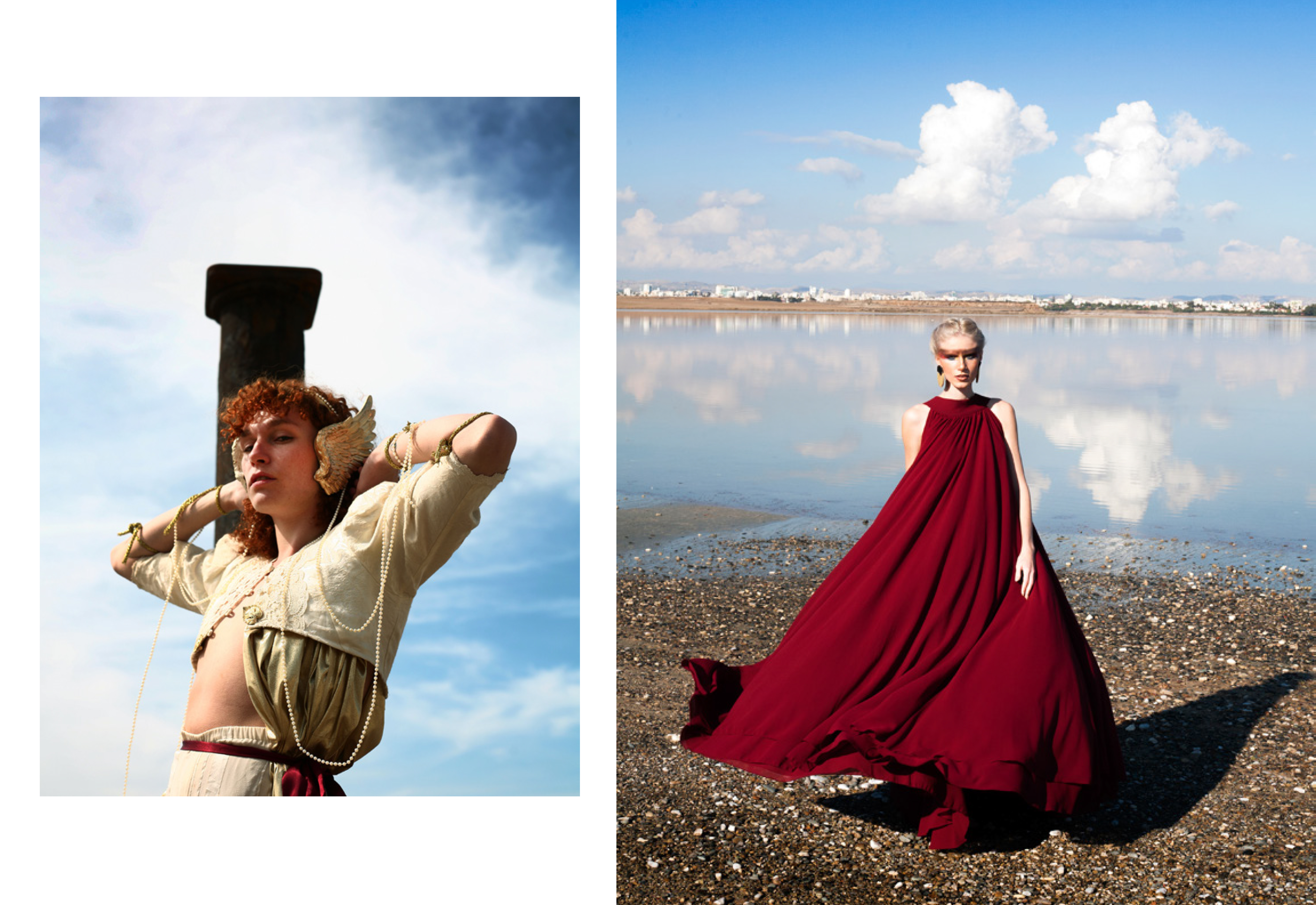
Mikaela Smila – University of Brighton
We live in an image obsessed world and I want to be the one dictating the mould others aspire to fit into. I want to be able to enhance the human form. My mission: the new and extraordinary. I am a conceptual artist that uses visual communication to push boundaries and provoke a wide range of interpretations. Organisation and devotion to detail is key in everything I do. I have a positive attitude and a great understanding of professionalism, as well as a willingness to build and learn new skills.
Photography isn’t just about capturing a subject for me. It’s about expressing my inner thoughts in a more conceptual way. My aim is to allow the viewer to step into my shoes and see things through my lens and focal points. What is so beautiful about photography is having the ability to seduce someone’s mind and have an influence upon their thoughts which is why my brand name is called ‘Mindful Seductions’. Themes such as psychology, mythology and astrology have always influenced me to step outside my comfort zone, experiment, debate and challenge my skills and creativity further.
I am aware that it is increasingly difficult to define ‘reality’ in photography, now that we are living in a digital age. During this course I have worked with both analogue and DSLR cameras which have expanded my knowledge and understanding of the origins and technological improvements photography has undertaken throughout the years. Studying a Fashion Communication in Brighton has enabled me to develop an independent and self-motivated practice. I have enjoyed discovering the many genres of photography, editorial, advertorial, beauty versus artistic and even documentary photography. I find the work of photographers both historical and contemporary highly inspirational. These experiences allowed me to witness firsthand what skills are required for becoming successful within the context of fashion and advertising. For me photography is a spiritual act, an inner belief and a desire to abstract essence beyond the material world. My work is built up from within, rather than manifesting a superficial image, something that is pertinent to my creative process.







